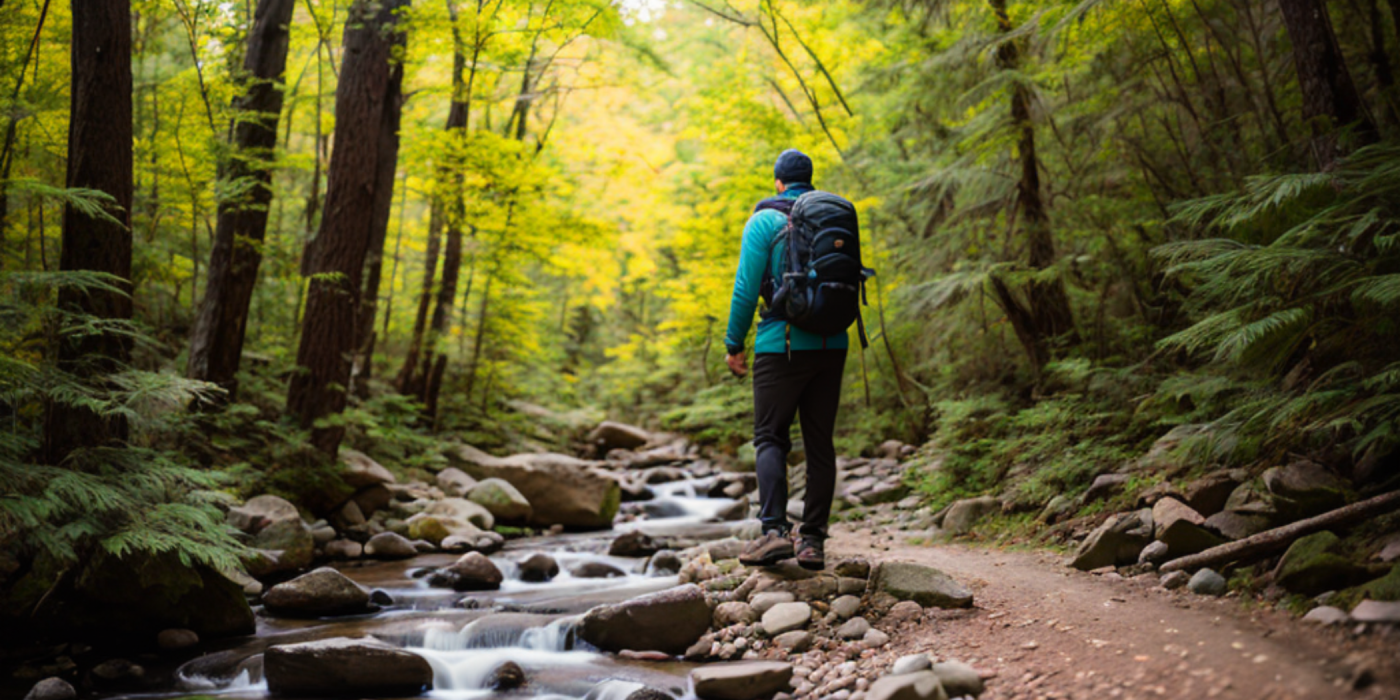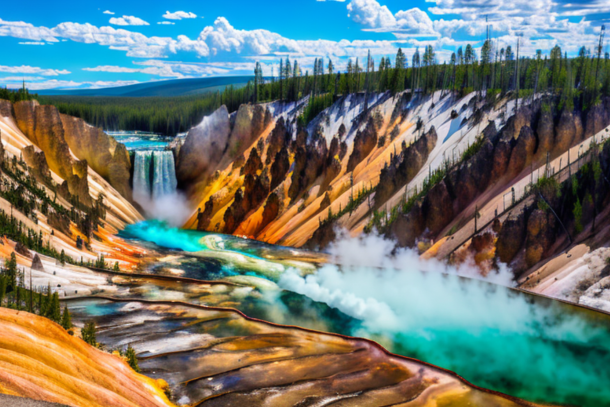How to Prepare for a Hike: Your Essential Guide to Hiking Preparation

Every year, millions of people across the globe strap on their hiking boots and head outdoors to immerse themselves in nature. In fact, a survey from the Outdoor Industry Association reveals that about 47 million Americans alone went hiking in 2020. It's not hard to understand why: hiking offers an unbeatable combination of exercise, breathtaking views, and a break from the digital world.
Yet, embarking on a hike isn't as simple as just putting one foot in front of the other. Preparing for a hike involves careful planning, from ensuring you have the right gear and clothing to understanding the terrain and checking the weather forecast. As any seasoned hiker will tell you, what you do before the hike can make a considerable difference in your experience.
This article will serve as your comprehensive guide on how to prepare for a hike. We'll delve into the importance of proper hike preparation and discuss how to assess your fitness levels for different types of trails. We'll offer guidance on choosing the right hike for you and arm you with a list of essential hiking gear you should have in your backpack. We'll also discuss critical nutrition and hydration tips for your adventure, introduce basic navigation skills, and underscore the importance of understanding basic safety measures and first aid.
So whether you're a seasoned hiker looking to brush up on your prep routine, or a beginner eager to venture out on your first trail, you're in the right place. Let's get started on how to prepare for a hike and make your experience safe, enjoyable, and unforgettable.
The Necessity of Hike Preparation: Safety and Enjoyment First
As we embark on the path to understanding how to adequately prepare for a hike, the first stepping-stone we encounter is the importance of preparation itself.
The Heart of a Successful Hiking Experience
Preparing for a hike may seem like a simple task, but it's a process layered with significance. Preparation is key to ensuring both safety and enjoyment on your adventure, two elements that serve as the backbone of a memorable hiking experience.
Every trail and hike come with its own unique set of challenges - weather fluctuations, varying terrain, or unexpected wildlife encounters. A lack of proper preparation could transform what was meant to be an enjoyable exploration of nature into an experience marked by discomfort or even danger.
Importance of Hike Preparation: A Safety Net
When we delve into the importance of hike preparation, the aspect of safety springs to the forefront. A well-prepared hiker is one who has taken the time to understand the terrain they'll be traversing, equipped themselves with the necessary gear, planned for sustenance, and familiarised themselves with the route and potential hazards.
The process of preparation acts as a safety net, reducing the risk of injury, or being caught unawares by unexpected circumstances. It's an investment in your wellbeing, cushioning you against the unpredictability of the great outdoors.
Not Just Safety, But Enjoyment Too
But hike preparation is not solely about safety. It's also about maximising enjoyment. Being prepared means you can soak in the beauty around you without worrying about avoidable challenges. It allows you to be present, to fully engage with the environment and the journey, enhancing your overall hiking experience.
To sum up, understanding the importance of hike preparation is the first step in planning an adventure that is as safe as it is enjoyable.
Evaluating Fitness and Health for Hiking
Before we strap on our boots and hit the trail, it's crucial to appraise our physical fitness and overall health. Hiking, while a fantastic way to connect with nature and reap the benefits of physical exercise, demands a certain level of fitness and stamina.
The Fitness Demands of Hiking
Hiking is a full-body workout, engaging a multitude of muscles. It demands cardiovascular fitness for the constant forward movement, strength for navigating uneven terrain, and balance for traversing tricky paths. The level of fitness required, however, is subject to the difficulty and length of the hike. Short, level walks will be much less demanding than steep, rocky climbs. Thus, evaluating your fitness level should always be relative to the type of hike you're planning.
Health Checks Pre-Hike
Before embarking on a significant hike, particularly if you're new to the activity, it's wise to have a health check. You should ensure that you're medically fit to undertake strenuous exercise, especially if you have any pre-existing conditions that might be affected, such as heart conditions or joint issues. Discuss your plans with a healthcare professional, who can provide personalised advice based on your health history and current condition.
Harnessing Fitness and Health for Hiking Success
In a nutshell, an honest assessment of your fitness and health forms the backbone of any successful hike preparation. It enables you to choose suitable hikes, set a realistic pace, and return home with the satisfaction of a challenge well met, rather than the frustration of biting off more than you can chew. Always remember: in the world of hiking, preparation is king.
Selecting Your Adventure: Choosing the Right Hike
Embarking on a hiking adventure that aligns with your fitness level, interests, and schedule is key to a successful and enjoyable experience.
Factoring in Fitness Levels
Start by gauging your physical fitness. If you're new to hiking or getting back into the swing of things after a long hiatus, you might want to opt for shorter, flatter trails. Gradually ramp up the difficulty as your endurance and strength improve. Conversely, seasoned hikers looking for a challenge can consider more strenuous treks with steep inclines or more technical terrain. Always remember, it's not about proving anything; it's about enjoying the journey and safely reaching your destination.
Aligning with Interests
Next, ponder what interests you. If you're a nature lover, select hikes that boast an abundance of flora and fauna. Are you a history enthusiast? Look for trails that pass historical landmarks or are steeped in lore. Keen on capturing breathtaking landscapes? High-altitude hikes often offer stunning panoramas that make the sweat and effort worthwhile.
Considering Time Constraints
Finally, take into account your available time. If you only have a few hours, you'll want to choose a short, nearby trail. But if you've got a full day (or several) to spare, you might decide on a longer, more immersive hike that allows for leisurely exploration.
By diligently considering your fitness levels, interests, and time constraints, you're on your way to choosing the right hike and having an unforgettable adventure. Happy hiking!
Kitting Up: Your Essential Hiking Gear
Equipping yourself with the right hiking gear is an integral part of preparing for a hike. Choosing the correct kit can make the difference between a comfortable, enjoyable experience and an uncomfortable, potentially risky adventure.
Essentials on the Gear List
-
Hiking Boots or Shoes: Depending on the terrain, you'll need well-fitting, sturdy hiking boots or shoes that provide ankle support and a good grip. Remember, the right footwear not only protects your feet but also increases your stability on tricky trails.
-
Backpack: A durable, lightweight backpack is a must. It should have enough capacity for all your essentials and ideally be water-resistant or have a rain cover.
-
Appropriate Clothing: Dress in layers to easily adjust to changing weather conditions. Synthetic or wool fabrics are preferable as they dry quickly and wick away moisture.
-
Navigation Tools: Carry a map and compass as a backup even if you use a GPS device. Familiarise yourself with their use before your hike.
-
Water and Food: Hydration is vital, so bring plenty of water along with energy-rich snacks.
-
First Aid Kit: Include basics like bandages, antiseptic wipes, tweezers, and painkillers. Also, know the essentials of how to use them.
-
Headlamp or Torch: Even if you plan to hike during the day, having a light source is crucial in case your trip extends into the evening or in emergencies.
-
Multi-tool: A multi-tool can be handy for repairs, preparing food, or in emergencies.
This essential hiking gear list can help ensure your journey into the great outdoors is as safe and comfortable as possible. Remember, the right kit can make all the difference on your hiking adventure.
Fuelling the Adventure: Hiking Nutrition and Hydration
Successfully completing a hike doesn't just depend on your gear or navigational skills; it's also significantly influenced by how well you fuel your body.
The Role of Nutrition in Hiking
When you're planning a hike, it's crucial to consider the demands you'll be placing on your body. This means thinking about the type of food you'll need to maintain your energy levels. Opt for high-energy, nutritious foods that are easy to carry and don't require refrigeration.
Complex carbohydrates such as whole grain bread or crackers, and proteins like nuts and seeds, are excellent for sustained energy release. Additionally, bring along some fresh fruit for a quick energy boost, and consider protein bars or dried fruit for a lightweight, non-perishable snack.
Staying Hydrated on the Trail
Hydration is equally important. Water is vital for every bodily function, and when you're exercising, your body needs even more to replace the fluids lost through sweat. Don't wait until you're thirsty to drink; sip water regularly throughout your hike. The amount you'll need can depend on the hike's length and intensity, the weather, and your body, but a general guideline is to drink about half a litre of water per hour of moderate activity in moderate temperatures.
Hiking Nutrition and Hydration: A Balancing Act
Ultimately, managing your nutrition and hydration on a hike is a careful balancing act. It's about knowing your body, understanding the demands of the hike, and preparing accordingly. Proper nutrition and hydration will not only make your hike more enjoyable but also safer, keeping you energised, focused, and ready to tackle any trail that lies ahead.
Mastering Navigation: A Key Aspect of Hiking Preparation
Whether you're embarking on a short ramble or a multi-day hike, basic navigation skills are indispensable. As we delve into the fundamentals of hiking navigation, you'll discover why these skills are paramount and how they can elevate your hiking experience.
Why Navigation Skills Matter
In an era where technology permeates almost every aspect of our lives, it's tempting to rely solely on digital maps and GPS. However, electronic devices can fail, batteries can run out, and signal coverage can be inconsistent or absent in remote areas. As such, understanding traditional navigation skills remains a cornerstone of safe hiking.
Mastering navigation can ensure you stay on track, preventing unnecessary detours or the unsettling experience of becoming lost. It can help you manage your time and energy better, and crucially, it equips you with the confidence to explore trails that are off the beaten path. So, let's say you're plotting a course through a majestic forest or tracing a route up a craggy hillside; solid navigation skills give you the freedom and assurance to do so.
Basic Navigation Skills for Hiking
The fundamentals of navigation for hiking typically encompass map reading, compass use, landmark identification, and understanding topography. These skills enable you to interpret your environment, accurately pinpoint your location, and confidently plan your route. Consider undertaking a navigation course or learning from experienced hikers to hone these abilities.
Remember, hiking isn't merely a physical endeavour; it's a mental one too. As you prepare for your next hiking adventure, take the time to cultivate your navigation skills. It's an investment that will pay off manifold, enriching your hiking experience and ensuring you stride forward with confidence.
Safeguarding Your Adventure: Hiking Safety and First Aid
In the heart of the great outdoors, being prepared isn't just about comfort — it's about safety. Embracing hiking safety and first aid knowledge can make the difference between an adventure you'll remember for all the right reasons and one you'd rather forget.
The Importance of First Aid Skills
First and foremost, let's address the need for basic first aid skills. Even with the best preparation and caution, accidents can happen. A simple misstep can lead to a twisted ankle, or an unexpected reaction to a plant can cause an allergic reaction.
Knowing how to respond to these situations, how to clean and bandage a wound, or recognise the signs of heat exhaustion, for instance, is crucial. First aid courses are widely available and are an investment in your safety.
Key Safety Measures
In addition to first aid skills, a host of other safety measures should be on your hiking checklist. Always let someone know where you're going and when you plan to return. Choose well-marked trails and stay on them.
Weather can change quickly, so check the forecast before you set off and dress accordingly — remember, layering is key. Be wildlife aware; know what kind of animals you might encounter and how to react.
Conclusion: Hiking Safety and First Aid
In essence, 'safety first' is more than a catchphrase when it comes to hiking — it's a way of life. So equip yourself with the necessary first aid skills, follow safety guidelines, and you're on track for a hike that's not just enjoyable, but safe as well.
The Final Stretch: Wrapping Up Hike Preparation
As we round off our journey through the ins and outs of preparing for a hike, let's take a moment to recap the crucial steps we've traversed.
Recapitulating the Hiking Preparation Process
The importance of hike preparation as the foundation for a safe and enjoyable experience has been a key theme. We've highlighted the need to assess your fitness levels and health status before venturing into the great outdoors, ensuring your body is ready for the challenge.
Choosing the right hike, tailored to your fitness level, interests, and available time has also been a pivotal topic, as it's crucial to find a trail that's both challenging and achievable. Moreover, we've outlined the essential gear and equipment necessary for a successful hike, from reliable footwear to weather-appropriate clothing and a well-stocked first aid kit.
Nutrition and hydration have also featured prominently in our exploration, given their importance in maintaining energy and focus during your hike. Additionally, we've underlined the need for basic navigation skills, ensuring you can stay on course during your outdoor adventure.
Ready for Your Next Hike?
Ultimately, hiking is more than just a physical endeavour — it's a chance to connect with nature, challenge yourself, and make memorable experiences. But none of this is possible without proper preparation.
So, as you lace up your boots for your next hike, remember the guidance shared in this article. Adequate preparation is the first step on the path to a rewarding hiking experience. Now it's time to put this knowledge into practice and hit the trail. Safe and happy hiking!
Related to this article are the following:
I do hope you have enjoyed this article and hope that you will subscribe to my newsletter so you can get the latest information about all things naturally relaxing.
Stay in touch, join the Naturally Relaxing Newsletter
Newsletter Signup
Post Your Comments
or post as a guest
Be the first to comment.
Latest articles in Nature

Exploring the UK’s Most Serene Coastal Trails

The Healing Power of Nature: Forest Bathing Explained

Sustainable Gardening: Tips for Growing Your Own Herbs

The Yellowstone Supervolcano: A Sleeping Giant

The Lost City of Atlantis: A Geological Mystery






